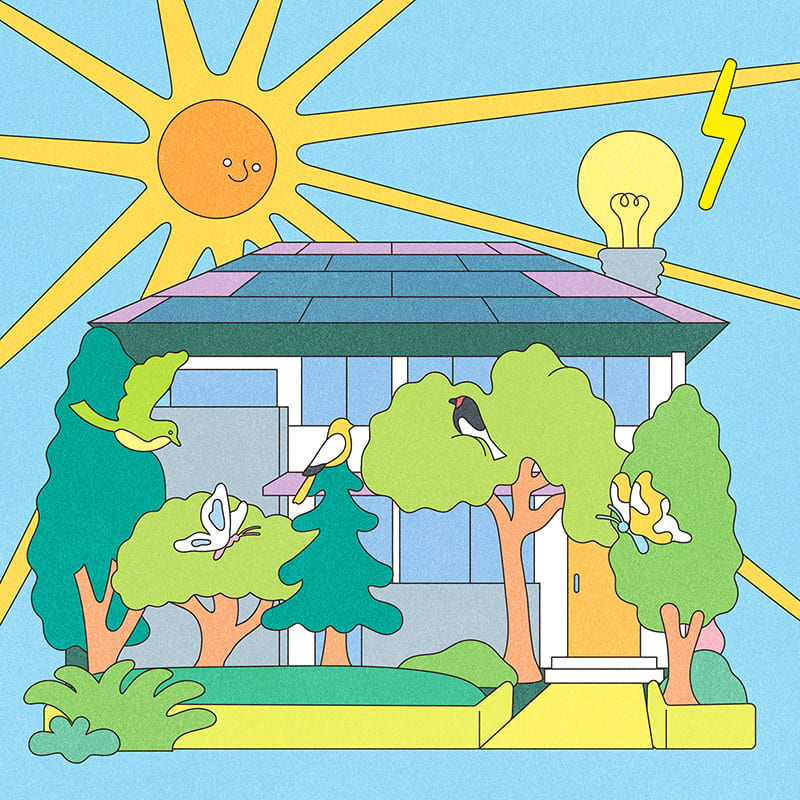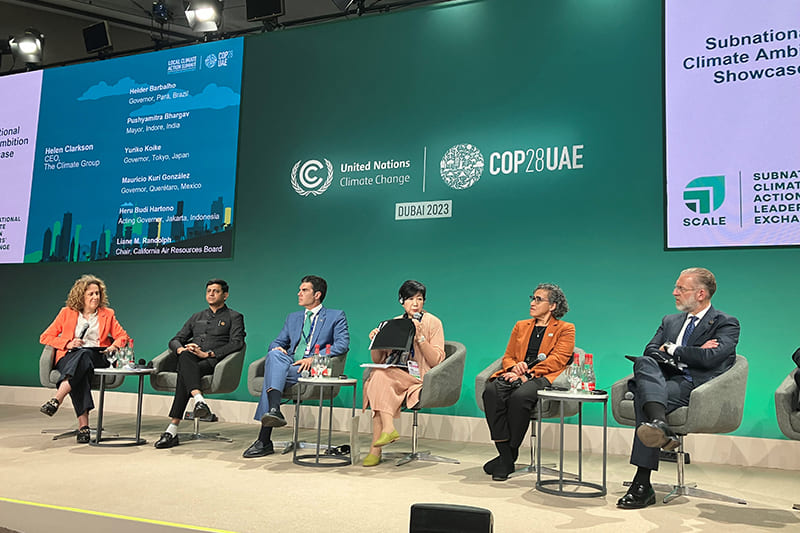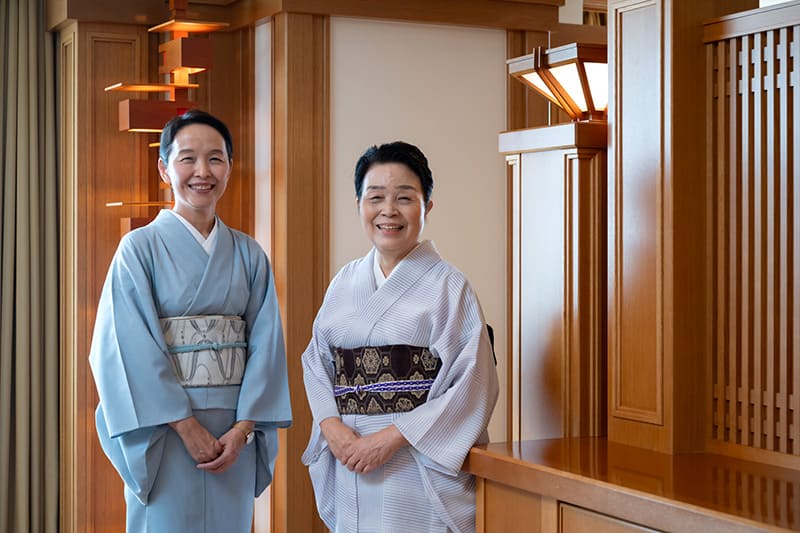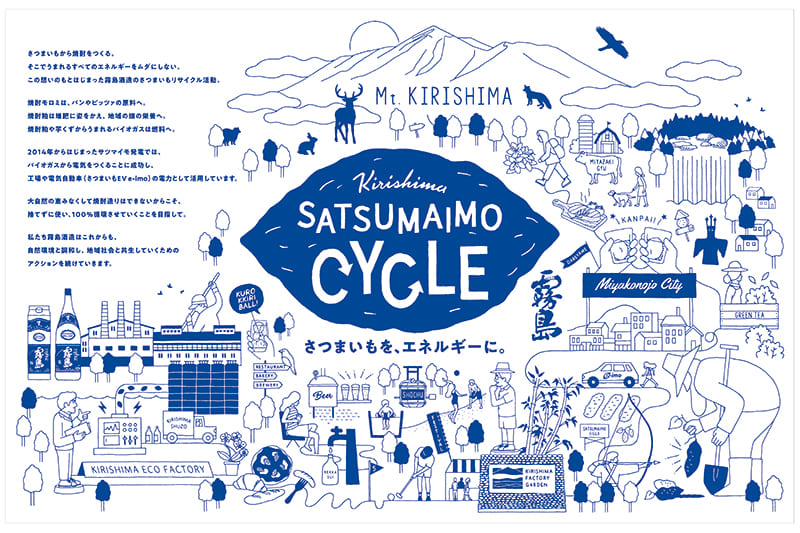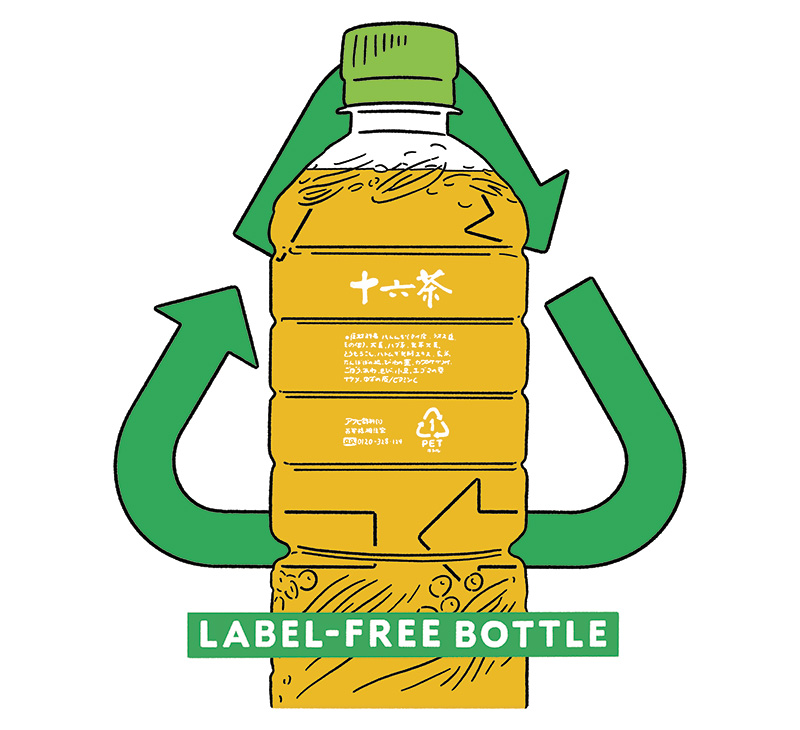March 29, 2024
Leading Japan’s sustainability from Tokyo
INTERVIEW
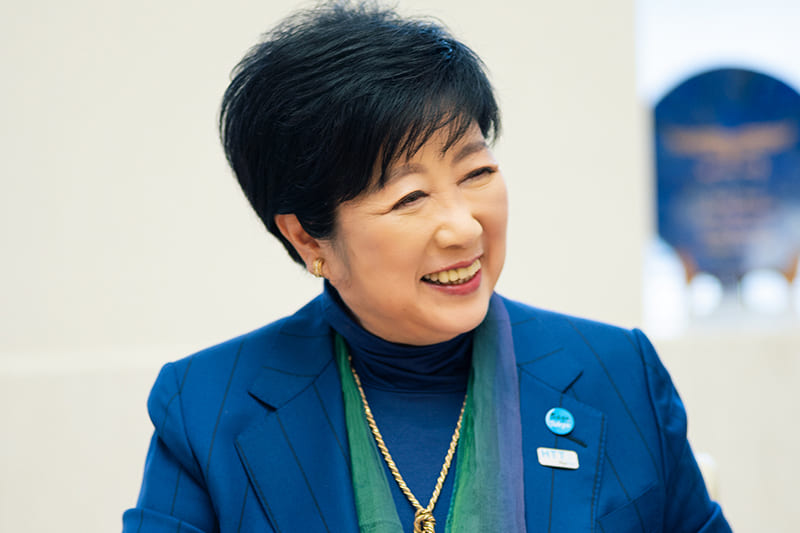
PHOTOS: GION
Yuriko Koike, governor of Tokyo since 2016 and one of Japan’s leading female politicians, managed to find time out from her busy official duties recently for an interview in the iconic Tokyo Metropolitan Government Building. Having gotten the city through the COVID-19 pandemic, she is now enthusiastically promoting urban sustainability, which means reducing the environmental impact of a city with a population of 14 million — comparable to that of a small country — and making it more resilient to disasters. Both her motivation and her drive can be traced back to her earlier career.
After graduating from Cairo University and having a stint of work as a newscaster, she became a member of the Diet in 1992. After becoming minister of the environment in September 2003, she contributed to bringing about a major change in public consciousness by advocating the “Cool Biz” concept of people working in light casual clothing during the summer. In July 2007, she became Japan’s first female defense minister. During her overseas trips, she demonstrated her diplomatic ability in meetings with U.S. Vice President Dick Cheney and others. She next ran in the Tokyo gubernatorial election and was elected with a groundswell of support.
Koike says her theme color is green. One of the first things she did after becoming governor was to issue a bond to raise funds for projects that would improve the environment, such as the use of renewable energy. Tokyo Green Bonds, issued in October 2017, the year after she took office, were the first of their kind to be issued by any prefectural government.
“When I was minister of the environment,” she said in the interview, “Japanese companies had no interest in environmental measures. When Japan hosted an international conference for the United Nations Environment Programme Finance Initiative (UNEP FI), their response was very poor, with many wondering what it was all about. That’s why I advocated Cool Biz as a topic that would be easier for everyone to get behind. But there were still many obstacles, and I ended up having the bitter experience of leaving my post with many of the things I wanted to do left undone. That’s why I decided to do what I wanted to do when I became governor of Tokyo. Taking measures to deal with the declining birthrate was another such effort, but I also focused on working on environmental measures to get some tangible results.”
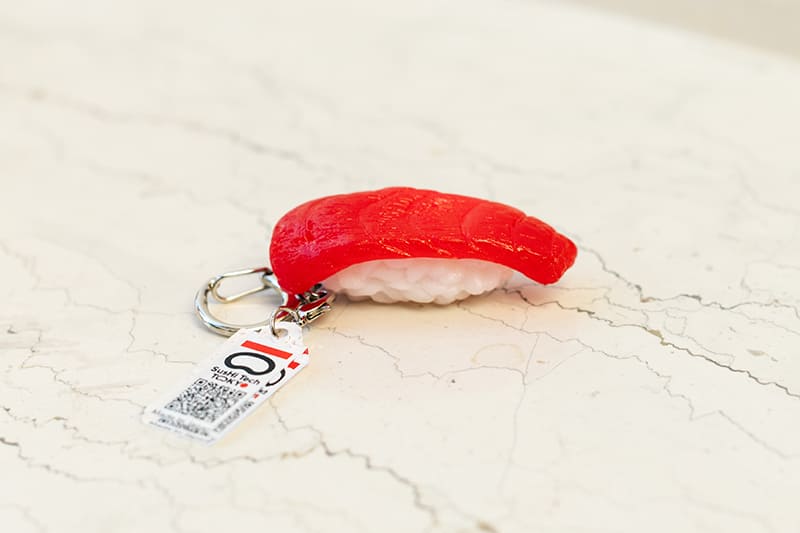
Koike’s policies and strategies, such as the green bonds, have always served as models for other local governments and even the national government to follow. In May 2019, she announced that Tokyo had a responsibility as one of the world’s megacities to realize “Zero Emission Tokyo,” thus contributing to achieving net zero emissions by 2050.
A year and a half later, the government made a commitment at the national level to aim for realizing net-zero emissions by 2050. Enthusiasm for naturally derived and renewable energy is now particularly high.
Asked what measures she pegs her highest hopes on, Koike said: “First and foremost, it is to secure a stable supply of clean and green energy. Even without mentioning the problems Ukraine is facing and the crisis in the Red Sea, I think securing a stable supply of such energy is an extremely perilous issue from the perspective of this country’s energy strategy. Needless to say, the national energy strategy ought to be placed at the top of many pillars. For a country like Japan, with no natural resources at all, there is nothing for us to do but advance in the areas of renewable energy and energy conservation — not only procuring raw materials and building supply chains, but we also need to work on enhancing our financing and technological capabilities. Our agility is being put to the test.”

© NEW SOUTH WALES GOVERNMENT
The Tokyo Metropolitan Government’s approach of creating comprehensive and multifaceted strategies extends to attracting venture capital and nurturing startups. “I have done a lot over the past seven or eight years, but the world has also changed a lot during that time. For example, in 2005, Japan’s CO2 emissions accounted for around 5% of the world’s total; now they represent about 3%. That’s why I’m trying desperately to reduce Tokyo’s share, though it is small from a global perspective. But at the same time we need a macro strategy to contribute to other countries’ efforts with Japanese technology. Bringing together technology and awareness, we need to spread good examples and good strategies originating in Tokyo around the world. SusHi Tech Tokyo is the symbol of these efforts.”
SusHi Tech Tokyo is short for Sustainable High City Tech Tokyo, the metropolitan government’s initiatives for realizing a sustainable city with advanced technology. In February 2023, Tokyo held a global pitch competition to showcase cutting-edge technology aimed at realizing a sustainable society. Out of the 20 domestic and international companies that were listed as finalists, Kyoto Fusioneering Ltd., a company that came out of Kyoto University and aims to stabilize energy supply through fusion power generation, was selected for the top prize. In addition to receiving ¥10 million ($65,000), the company also received investment opportunities from prominent investors.
Startup events are held every year in cities around the world, including CES in the United States and Viva Technology in Paris, with intercity competitions intensifying. Tokyo’s event initially was named City-Tech.Tokyo, but that lacked an impact in the intercity competitions.
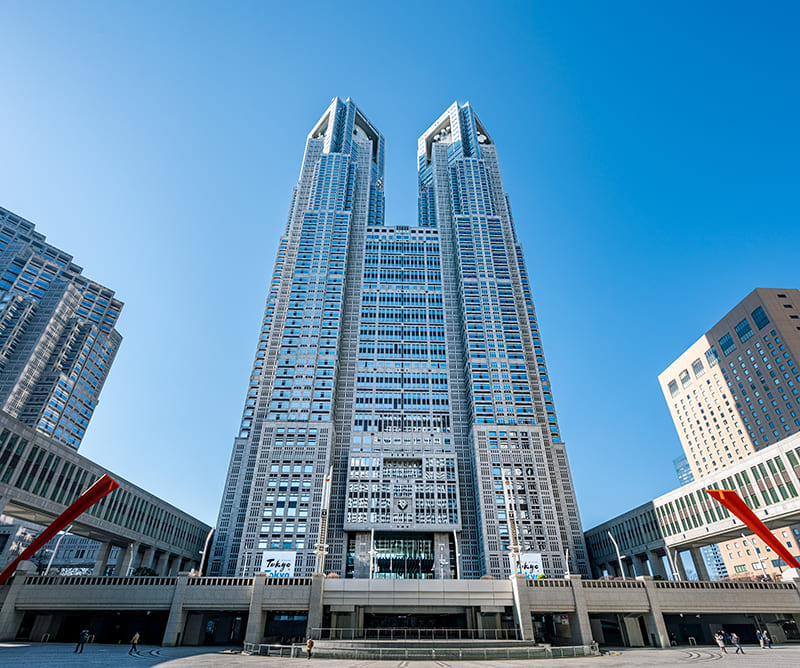
“It was the kind of cliche that could be found anywhere, so I was wondering if there was any better way to name it, and one day when I was taking a bath, I hit upon the idea of naming it SusHi Tech,” Koike said. “It’s about sustainability and high technology. And when I explained to people overseas how the name came by putting them together, they all slapped their knees. The other day, I explained it to [former U.S. Secretary of State] Hillary [Clinton], who was sitting next to me at a dinner event, and I gave her a sushi keychain. She said it was great. It’s a really compelling name. We are slated to host one of Asia’s largest events this spring, with the number of expected participants growing to a level on par with similar events hosted by Singapore.”
SusHi Tech Tokyo 2024 will be held in the Tokyo Bay area from April to May. It is expected to feature exhibits from over 400 startups from around the world, including the latest technologies in the areas of the environment and future mobility, and draw more than 500,000 visitors. It will serve as a golden opportunity for Tokyo to display its new image as a city that aims to realize sustainability through advanced technology. Koike intends to visit the event site frequently to promote it to the world. “It should be a grand meeting point where startups, investors and accelerators come together,” she said. “We want it to be more than just a fun gathering; we want to make it an event where opportunities will be created and businesses will move forward. Attendees will be the kind of people who want to see nothing but results.”
YURIKO KOIKE
Governor of Tokyo. Born in 1952 in Ashiya City, Hyogo Prefecture. Koike studied at Cairo University in Egypt after leaving Kwansei Gakuin University before graduating it. In 1976, she graduated with a Bachelor of Arts in Sociology. After returning to Japan, she became active on television, working among other roles as Japan’s first female business newscaster on a news program. In 1992, at the age of 40, she was elected to the House of Councilors on her first attempt. In 1993, she ran for the House of Representatives and was elected. She has served as Minister of the Environment, a special advisor to the Prime Minister (for national security), and as the first female Minister of Defense. In 2016, she was elected Governor of Tokyo on her first attempt. She is currently serving her second term following her landslide victory in the 2020 gubernatorial race, advocating the “grand reform of Tokyo.”
東京から日本をリード。小池都知事インタビュー。
東京を象徴する東京都庁の応接室に、分刻みの公務の合間を縫って日本を代表する女性政治家が登場した。2016年から東京都知事を務める小池百合子。彼女は今、都市のサステナビリティ対応を強烈に推進している。
グリーンボンドしかり、小池都知事が打ち出す政策や戦略は、常に日本のほかの自治体や国をリードして来た。太陽光発電の画期的な技術開発や、グリーン水素の取引所創設など、日本どころか世界に先んじた戦略を描き、具体的な一手を打っている。総合的で多面的な戦略は、スタートアップ企業の誘致・育成にまで及ぶ。
今年、2024年4月から5月、東京ベイエリアにおいて「SusHi Tech Tokyo 2024」の開催が控えている。世界400社以上のスタートアップによる出展と、50万人以上の来場者を見込み、環境関連や未来のモビリティなど最新技術の展示も予定されている。ハイテクノロジーでサステナブルな都市の実現を目指す新しい東京。その姿を見せる絶好の機会。小池都知事も期間中、足繁く通い、世界にアピールしていくと熱く語る。
Return to Sustainable Japan Magazine Vol. 34 article list page

